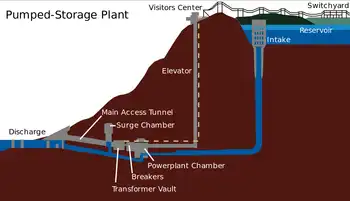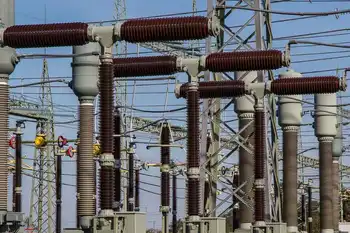ITER and JET lead the way on fusion
By Wall Street Journal
Protective Relay Training - Basic
Our customized live online or in‑person group training can be delivered to your staff at your location.

- Live Online
- 12 hours Instructor-led
- Group Training Available
The problem isn't whether fusion can work: It does. Scientists have successfully released energy from light atoms by fusing their nuclei together. The special reactor at the Culham Centre for Fusion Energy in England holds the world record for most fusion power produced.
The problem is turning fusion into a viable large-scale energy source — one that is economical, clean and safe. That is still somewhere over the horizon. After decades of research and billions of dollars in public financing, no fusion experiment yet has been able to generate more energy than it consumed in the process.
Britain's Green Party, for one, doesn't rule out "big-stick" solutions like fusion power as potential energy sources in the future. But the party would rather see the UK government investing in renewable energy sources that work already, says James Abbott, the party's science and technology spokesman. "Our main concern [with fusion] is it's obviously an expensive and highly specialized form of energy production, and it's still at an experimental stage," he says.
Fusion's supporters, however, include the governments of the European Union, U.S. and China, and they are funding fusion research at a rate of roughly $1 billion a year in total.
The world's leading magnetic-confinement fusion project is at Culham, where scientists are, not surprisingly, optimistic. "Once we know how to do fusion, which ultimately we will, it will clearly dominate energy production," says Steven Cowley, director of the Culham Centre for Fusion Energy and chief executive officer of the UK Atomic Energy Authority.
Experimental fusion reactors release energy from light atoms by fusing their nuclei together to form heavier ones — as opposed to splitting atoms, the way today's commercial nuclear power stations do. Thus, fusion is a safer alternative to today's nuclear power plants, Mr. Cowley says. The reaction only generates helium, an inert gas, as a byproduct. The walls that capture the heat of the reaction periodically need replacing, but they can be disposed of as low-level radioactive waste or recycled in fusion reactors, he says.
Scientists at Culham are preparing for an experiment in 2013 in which they hope to break their own record of 16 megawatts of fusion power. The doughnut-shaped reactor at Culham, known as the Joint European Torus, or JET, can take an amount of fuel about equal in mass to a postage stamp and heat it to more than 100 million degrees Celsius — hotter than the sun. This creates plasma, which in turn releases energy. Eventually, scientists hope to create enough energy, and at sustained levels, to produce electricity using steam-driven generators.
Fusion power plants would fuel the reactions with deuterium, which is found in seawater, and tritium, which is bred in the reactors from lithium, an element found in brines.
Meanwhile, a much larger project, capable of producing far more power than JET, is under construction in Cadarache, France. Experiments at the International Thermonuclear Experimental Reactor — to be housed in a building 19 stories tall with five more stories below ground — are scheduled to begin in 2018. ITER is expected to cost tens of billions of dollars, funded by the governments of the European Union, India, Japan, China, Russia, South Korea and the U.S.
These governments are issuing ITER contracts to businesses in their own countries. They want the project to broadly stimulate high-technology industries around the world, says Neil Calder, the project's communications head. The majority of contracts will be signed in the next four to five years, he says.
The initial goal for ITER is to generate some 500 megawatts of power for extended periods, enough in theory for roughly 500,000 homes. But more important, ITER hopes to achieve the breakthrough that so far has eluded fusion researchers: a reaction that generates more power than it consumes. And if that succeeds, ITER plans a demonstration power plant — capable of producing at least two gigawatts — that could be functioning by 2040, Mr. Calder says.
Mr. Cowley says he believes ITER will produce at least 10 times more energy than will be needed to create the reactions. That's because the reactor will be much larger and better insulated than other experimental fusion reactors, which will allow ITER to produce and hold far more energy as heat, he says. "The JET is just smaller than the idea we have for a commercial reactor. If you make a bigger bottle, it's better insulated."
Such optimism isn't deterring fusion's opponents. Dave Martin, policy adviser for Greenpeace Canada, a key player in causing Canada's government in 2003 to withdraw its bid to be host country for ITER, says he thinks it's likely to take 50 years at best to commercialize fusion as a practical power source. He says the exorbitant costs needed to make fusion power viable would be better spent on simpler, proven renewable energy sources such as solar and wind.
He calls fusion power "a misguided, grotesquely expensive engineering boondoggle."
Mr. Cowley concedes that because of the high costs involved, at least two more decades of state sponsorship will be required before fusion can be made part of electricity grids.
But in the meantime, both ITER and JET are already generating a lot of new scientific and business activity, particularly among small high-tech companies. ITER's 23,000-ton reactor will require highly heat-resistant materials, coils of superconducting cables, cryogenics to cool the coils, remotely controlled robotics to safely maintain the reactor, and diagnostics to understand the experiments' results.
"ITER is a fountain of different technologies," says Mr. Calder. "The success of ITER depends on the ability to produce materials which will resist the extremely ferocious conditions inside" the reactor, he says.
Corus, a London-based steel producer that is part of India's Tata Steel Ltd., is researching how to build a more pure and durable steel, Mr. Cowley says.
Oxford Instruments PLC, a maker of superconducting materials, has developed a new type of wire and braiding for ITER. The English company says it has agreed to supply 67 metric tons of its wire, valued at more than £35 million (about US $55 million). The company also supplies superconducting wire for other uses, such as magnetic resonance imaging, says Chief Executive Jonathan Flint.
Mr. Flint sees the ITER work as integral to his business. ITER will increase global demand for superconducting wire 30%, he says. "It's a sea change."











